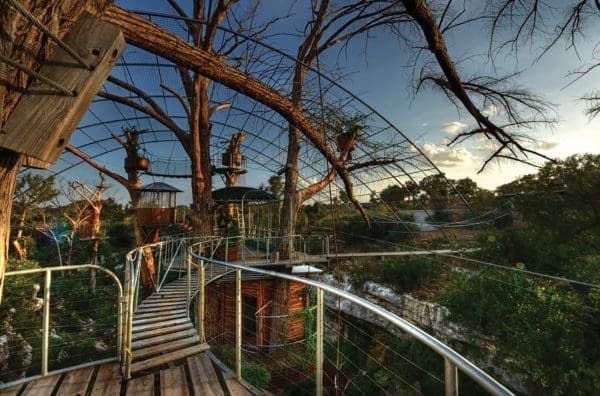The French Legation Museum

History Spotlight
Words by Amanda Covo Photos courtesy of Texas Historical Commission
Originally built to be a diplomatic residence for the French government in the Republic of Texas, East Austin’s French Legation Museum boasts the oldest—and, perhaps, least well-known—structures in the city.
It’s the kind of quaint cottage made for a Nicholas Sparks book: white columns, batten exterior doors, wide baseboards and a gracious gallery porch, fit for rocking chairs and long afternoons. Yet despite its Creole architecture, the setting is no Louisiana bayou. The cottage, owned by the State of Texas but built by the French, dates back to when Austin was filled with open plains, the Colt Walker revolver was first designed, and Texas was its own country.
The French Legation Museum, built in 1841 to be a “French embassy” of sorts, is the oldest wooden structure in Austin. It’s also, perhaps, one of the least well-known historic landmarks in the city.
Perched on a hilltop overlooking downtown Austin and beneath a canopy of thick shade trees, the wood-framed cottage and its 2.5 acres of lush lawn are easy to miss. It sits set back on a sleepy residential road just east of I-35 at the west end of 8th Street; however, its origins are anything but placid.
Following Texas’ independence from Mexico in 1836, the French government sent a secretary of the French legation in Washington, Alphonse Dubois de Saligny, to explore the benefits of a partnership between France and the new rebel republic.
At the encouragement of Dubois de Saligny, France’s King Louis Philippe officially recognized the Republic of Texas as a sovereign nation in 1839 when he signed a treaty of amity, navigation and commerce. Dubois de Saligny was ordered to stay and establish an official French presence, but life for the French diplomat was growing complicated.
His relations with the Texian government started deteriorating under President Mirabeau B. Lamar, according to the Texas State History Association.
“One of the principal objectives of Dubois de Saligny’s mission was the passage of the Franco-Texian bill, under which substantial portions of West Texas would be settled by French colonists,” according to the Association’s Handbook of Texas Online. “Suspicions arose that Dubois de Saligny and certain French entrepreneurs would profit handsomely by the Franco-Texian bill.”
Meanwhile, Dubois de Saligny’s reputation was all but ruined after a local hotelkeeper claimed the French official slaughtered his pigs following a dispute. What became known as the “Pig War” contributed to Dubois de Saligny being ordered to leave the country, with the cottage still unfinished.
A French Legation would now have little use in Austin, anyhow. In 1841, Sam Houston was re-elected president (he first served in 1836, prior to Lamar) and moved the Republic’s capital from Austin to Houston.
Construction of the cottage was eventually finished but the legation was recalled after annexation, and the property sold to a Catholic bishop. It has changed hands several times over the decades, now serving as a museum and event space at the hands of its custodians, the Texas Historical Commission.
The museum opens six days a week for tours of the home. Its grounds, though, are equally as impressive, serving as the site for occasional weddings, outreach events and a children’s story time the first Thursday of every month, at which there must be no shortage of tales to be told in a setting as rich in history as the French Legation.
[adrotate banner=”9″]
Did you know? The French Legation Museum is open 1-5pm, Tuesday – Sunday, where you can join a tour of the historic house and reconstructed kitchen. Alliance Française d’Austin hosts pétanque with a potluck picnic every second and fourth Sunday afternoon each month. Alliance Française provides the necessary equipment and happily invites new and seasoned pétanque players.
Update:
As of February 14, 2018, the French Legation began a renovation process and is no longer open to the public for tours at this time. They are trying to restore it to its original state and hope to re-open to the public as soon as possible.
Contact:
802 San Marcos St
(512) 472-8180










